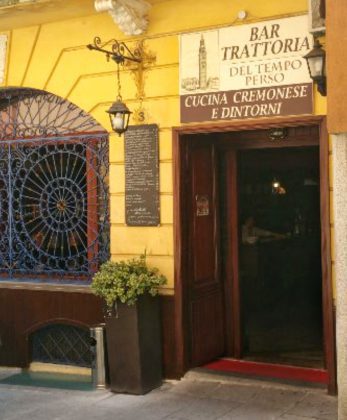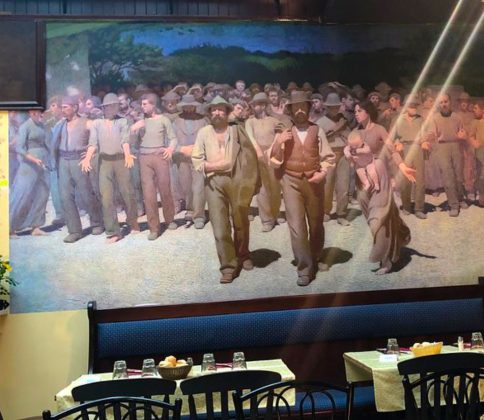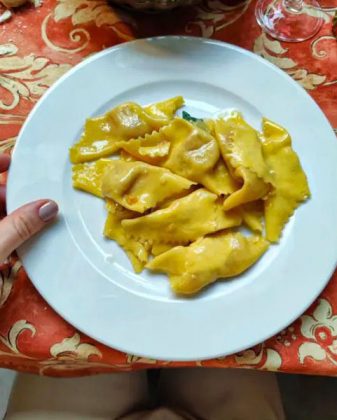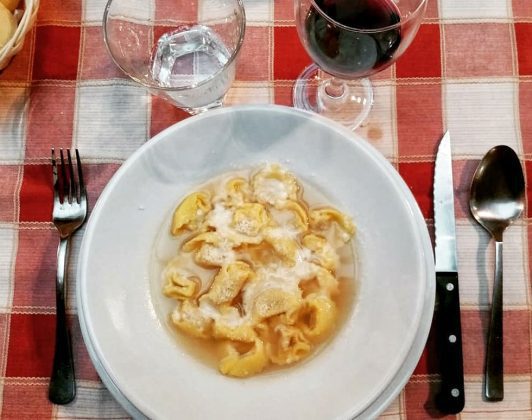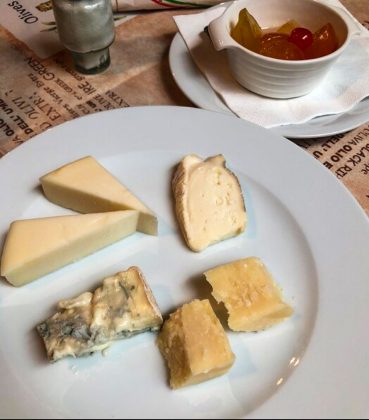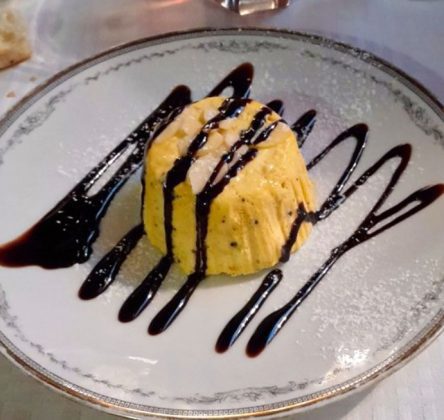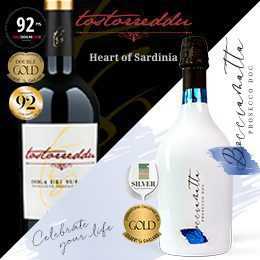In the heart of the Po’ Valley almost on the border with Emilia Romagna there is Cremona, a small and graceful city famous all over the world for its excellences. Together with Pavia and Mantua, Cremona is the extreme south of Lombardy and is immersed in the fertile countryside. The river Po’ gave it economic prosperity since its foundation in 218 B.C. by the Romans, making it a city rich in artistic treasures.
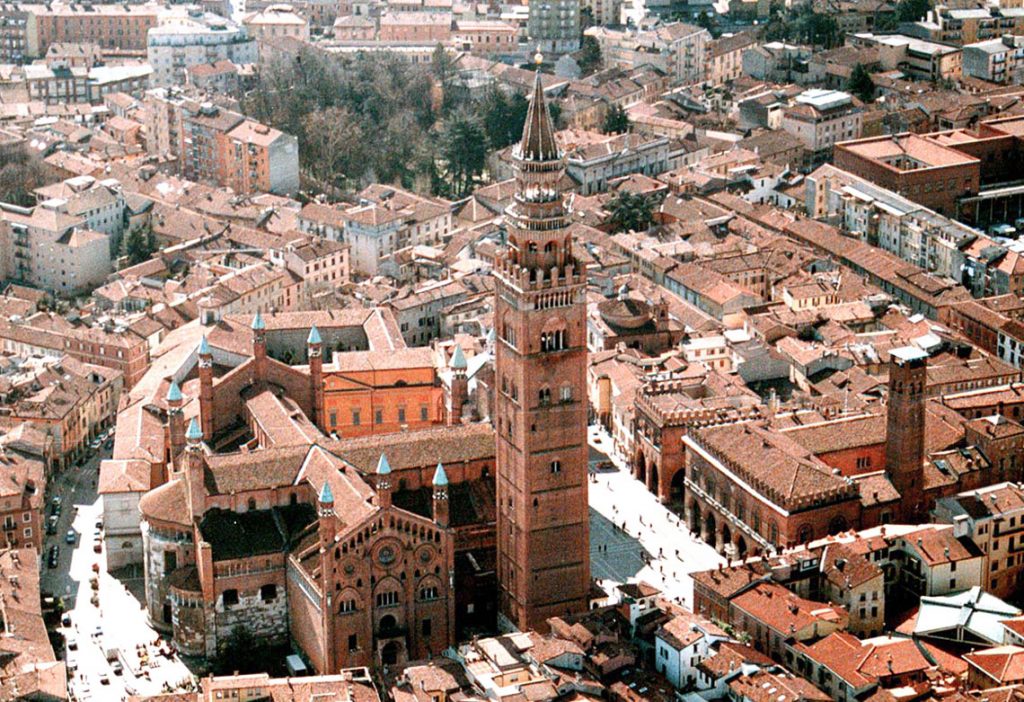
Given the small size and proximity of all the main attractions, one day is enough to walk around. I suggest to arrive by train because it is more practical and cheap (from Milan it takes little more than an hour).
In addition, just a few steps from the train station of Cremona there is one of the best pastry shops in the city, Pasticceria Dondeo, where you can go as soon as you arrive for a typical Italian breakfast with cappuccino and excellent homemade croissants.
Better visit Cremona preferably in autumn or winter, maybe on a nice and cold sunny day, both to avoid the suffocating heat and to enjoy the best of Cremona cuisine (the dishes are quite robust!)
What makes the city of Cremona so interesting?
- Cremona is the home of violin makers. The Museum of Violin preserves the masterpieces of Antonio Stradivari. Furthermore, the luthier tradition of Cremona is included in the Unesco heritage.
- Cremona’s Cathedral collects such magnificent series of frescoes and it is named the “Sistine Chapel of North”.
- The tallest medieval bell tower in Italy and its breathetaking panorama.
- The largest astronomical clock in the world on the facade of the Torazzo tower.
- The traditional Torrone di Cremona: sweets made from eggs, toasted almonds and honey. Goodness!
So, let’s start the tour!
The square “Piazza del Comune”
The center of Cremona revolves around the square “Piazza del Comune” where all the main attractions of the city are located and right from here I suggest to start the tour. The square, with its 47 meters above sea level is the highest point of the city – weird right? – and is sorrunded by the most beautiful and important buildings.
What a striking contrast between the red brick and the white stone of the facades!
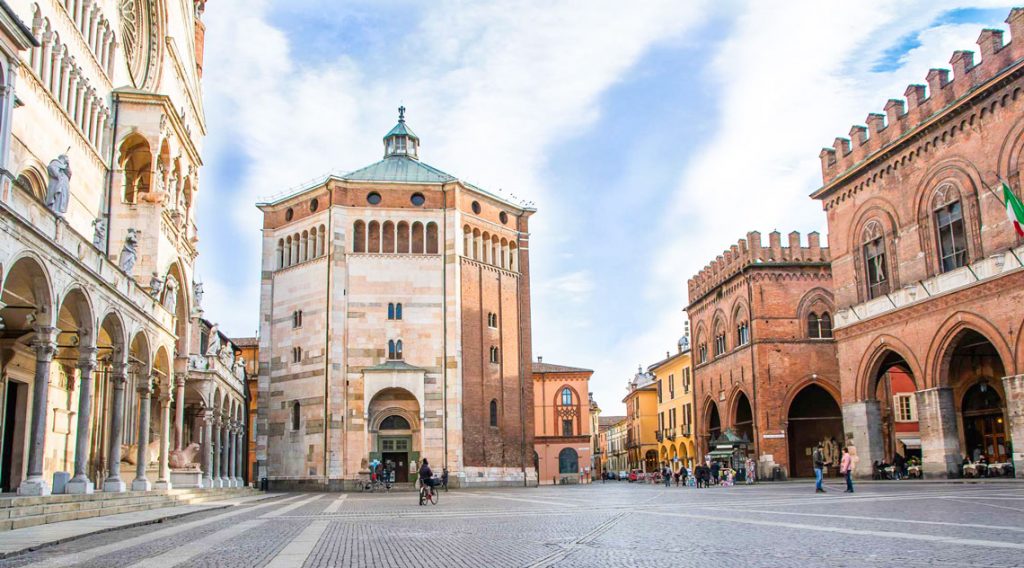
In the Piazza del Comune we can admire the Duomo, tower Torrazzo and the Baptistery, the Palazzo Comunale, the Loggia dei Militi and the Portico of Bertazzola.
Il Duomo di Cremona (Cremona’s Cathedral)
From the outside of the square you will notice the facade so symmetrical and elegant but also the interior will not disappoint you: really majestic and with a high ceiling. No matter how tall you are, you will feel really small 🙂
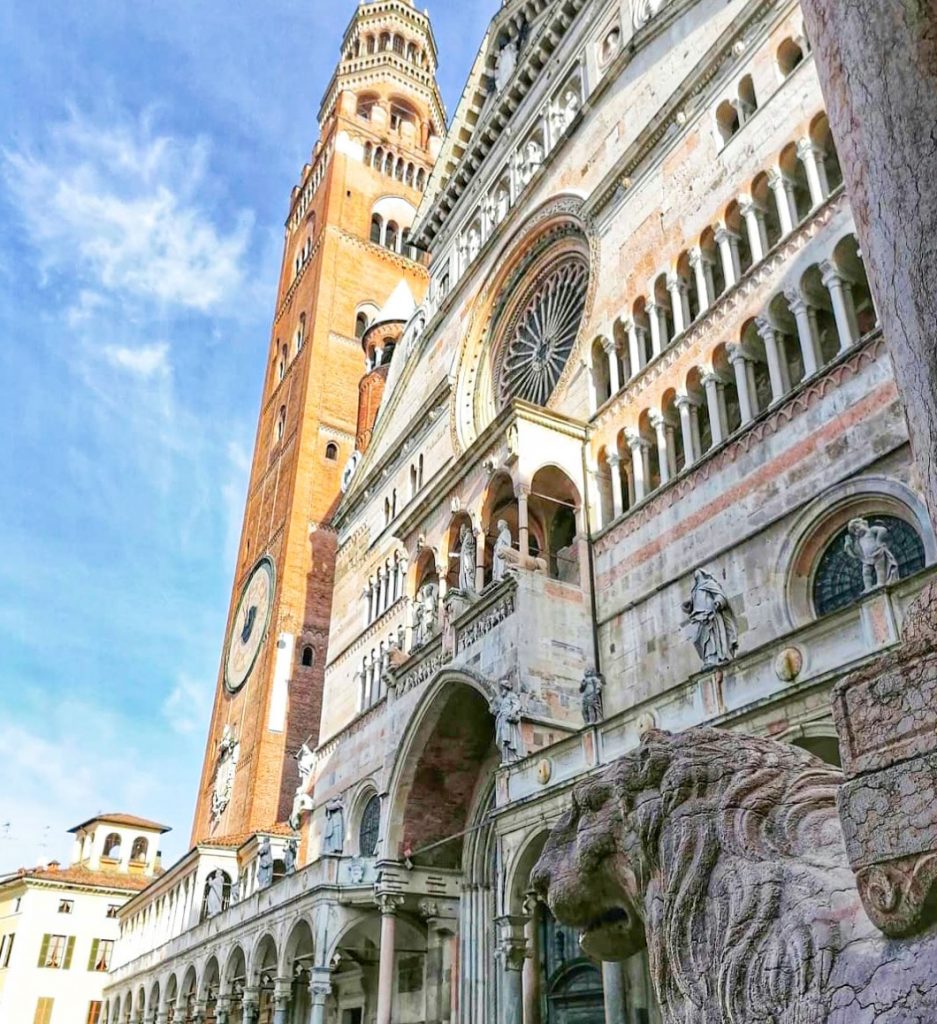
This splendid building was built in Romanesque style in 1100 and it has been adjusted in various periods with the addition of Gothic and Baroque elements.
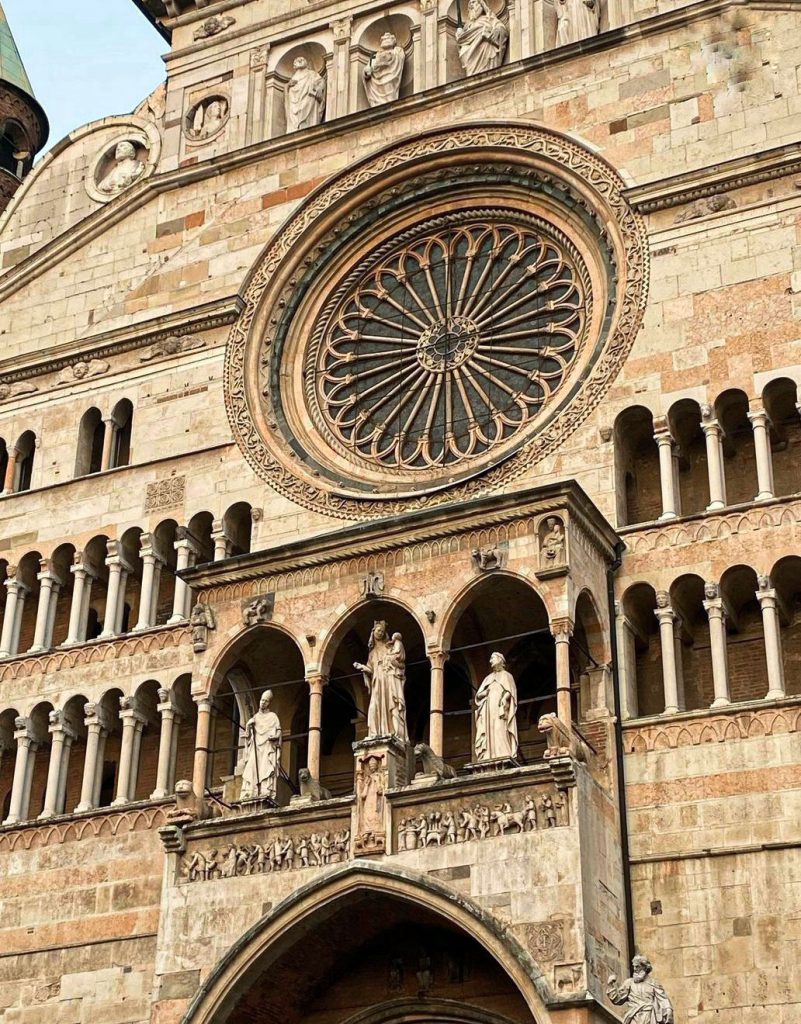
The interior has three naves which are a fine example of Renaissance art, people call it the Sistine Chapel of the Po’ Valley. The central nave was decorated by the great painters such as Boccaccino, Bembo and Melone.
Ticket cost: Free
The medieval bell tower “Il Torrazzo” and the Baptistery
Leaving the Cathedral it is time to climb the Torrazzo, to enjoy a superb view that ranges from the red roofs of the city to the green Po’ Valley, from the Alps to the Apennines.
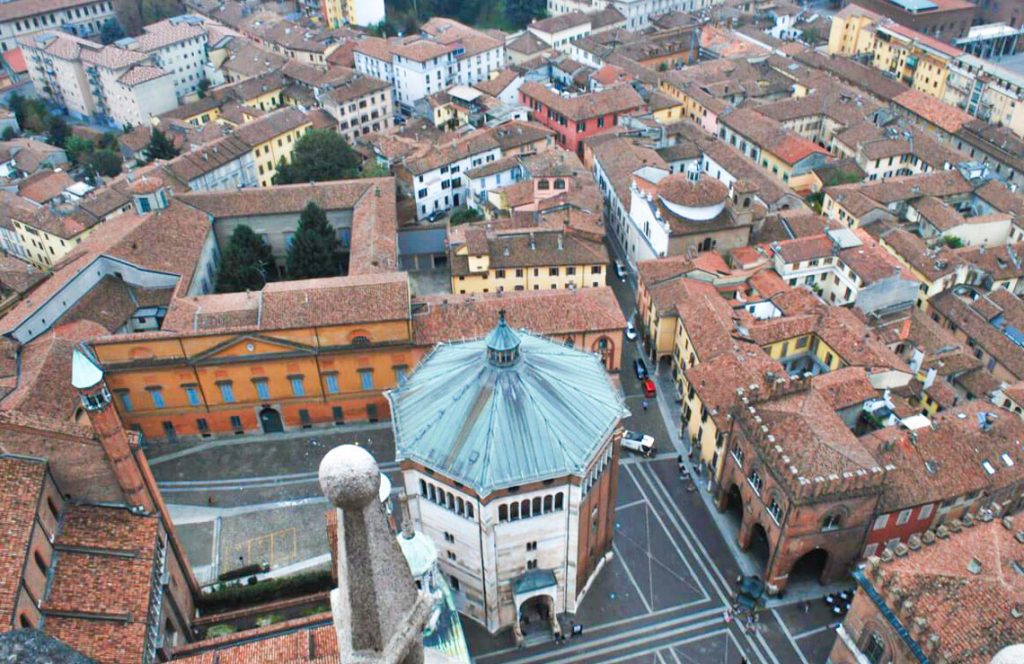
In good weather you get to see 100 km away! There is no elevator, so you have to walk the nearly 502 steps to get to the top.
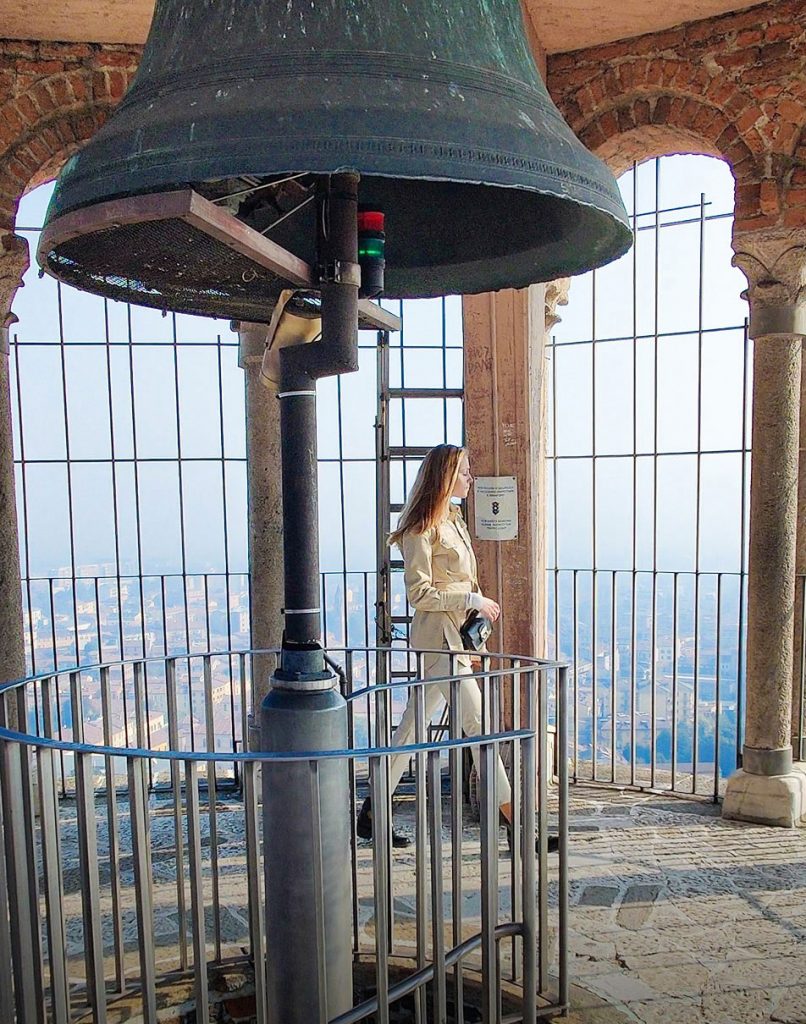
However, it is worth having the thrill of reaching the top of the highest medieval bell tower in Europe that with its 112 meters high. From the top you can enjoy counting how many bell towers you can see. Cremona is literally full of them!
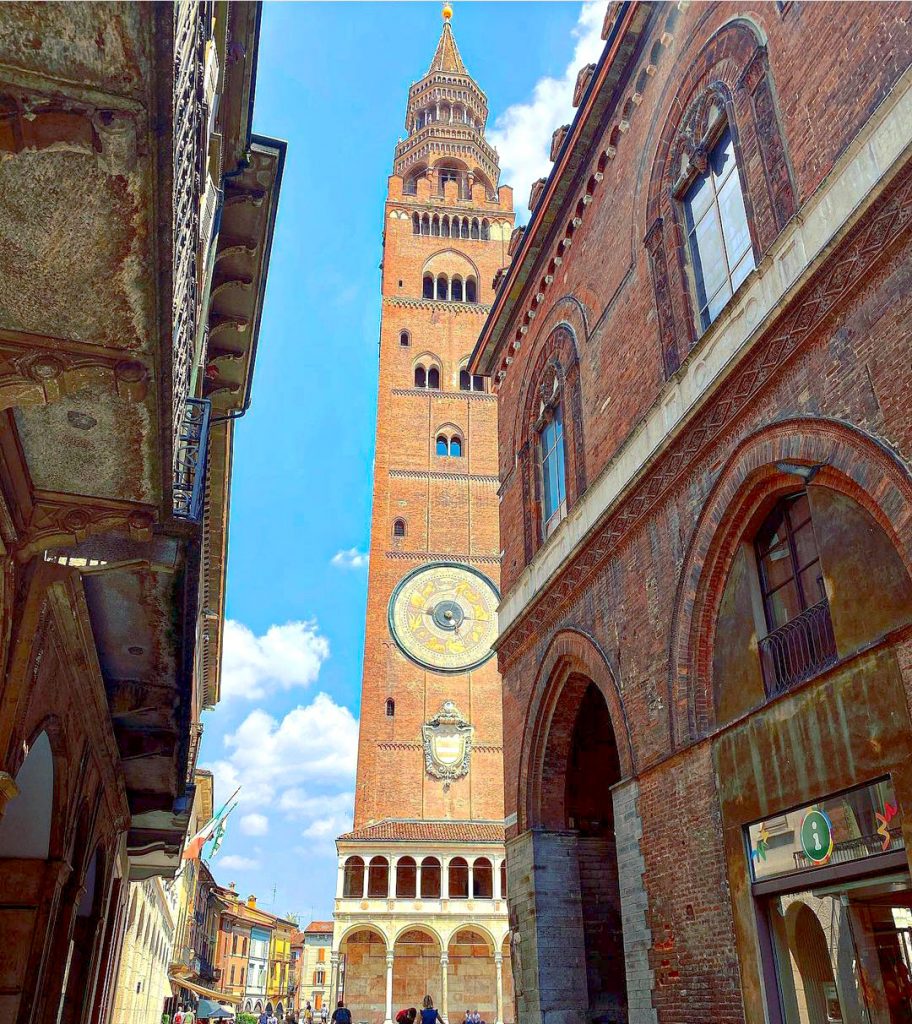
In a room inside the Torrazzo, you have the opportunity to see a movie that explains the complicated and super fascinating mechanism of the astronomical clock, one of the largest in the world with a diameter of 8.20 meters. Just to give you an idea, the clock diameter is more than 1 meter larger than the one of Big Ben in London.
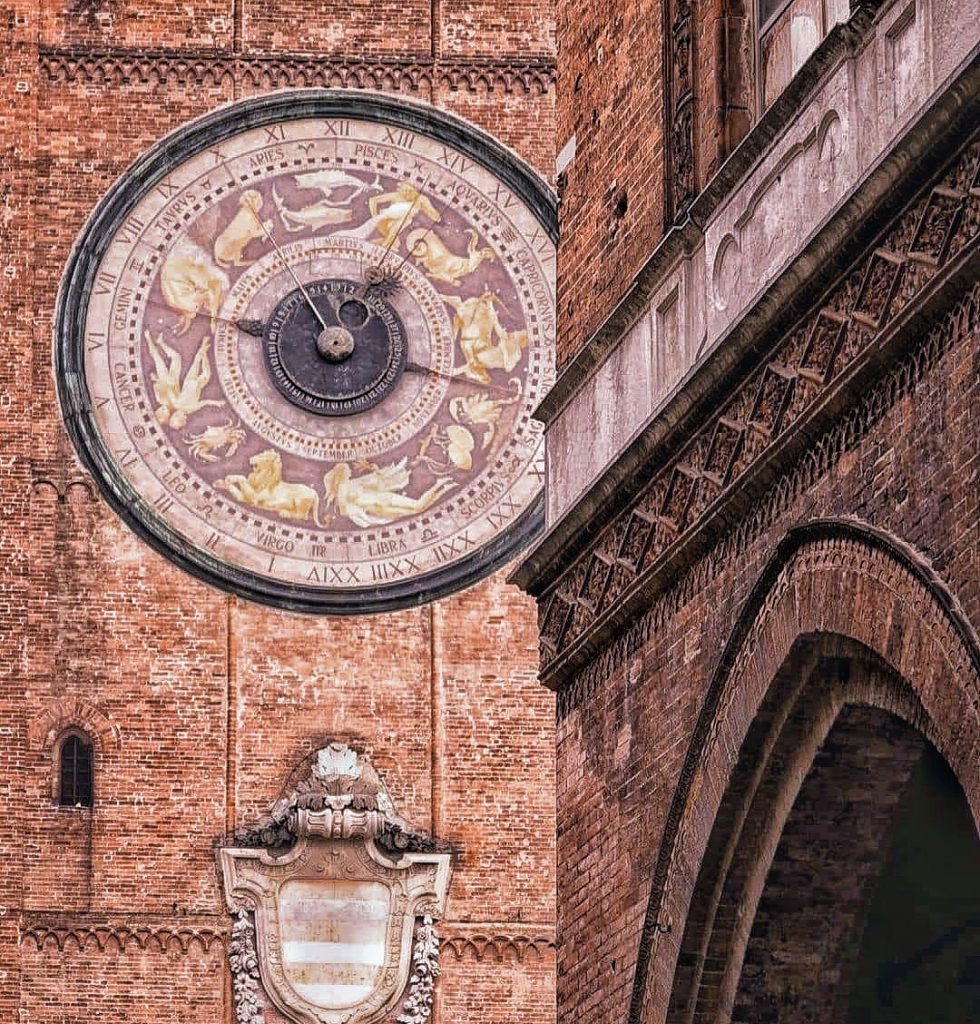
It is now time to visit the Baptistery. Built in 1167 it combines elements of Romanesque and Gothic-Lombard architecture and it has an octagonal plan where the 8 (of the sides) is not a random number: the eighth day is that of Creation, therefore of Baptism. Only two sides are covered with marble, to adapt them to the facade of the Cathedral, while the others were left as originally.
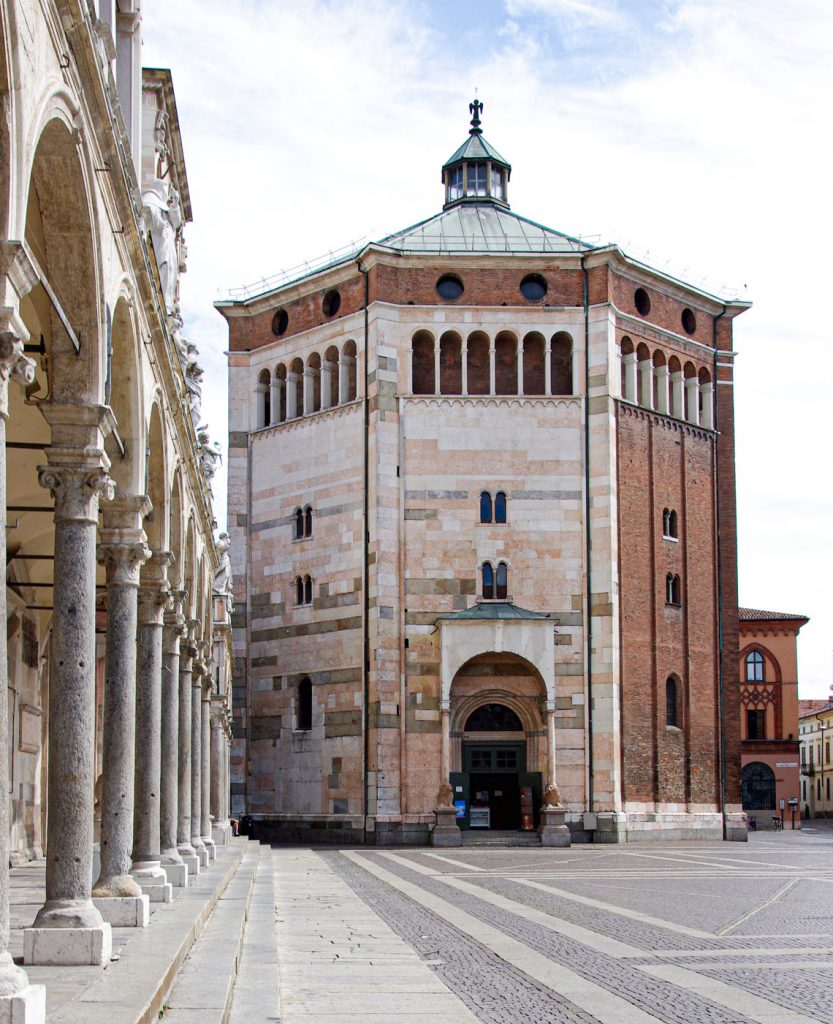
The Town Hall is an elegant structure that closes one side of the square that has the same name. It has been used continuously for more than 800 years and is still operating today. You can visit the halls on the second floor where you can admire several paintings from city churches and works of artists active in the area between the sixteenth and seventeenth centuries. From the rooms overlooking the square, you have a beautiful view of the Torrazzo and the Duomo.
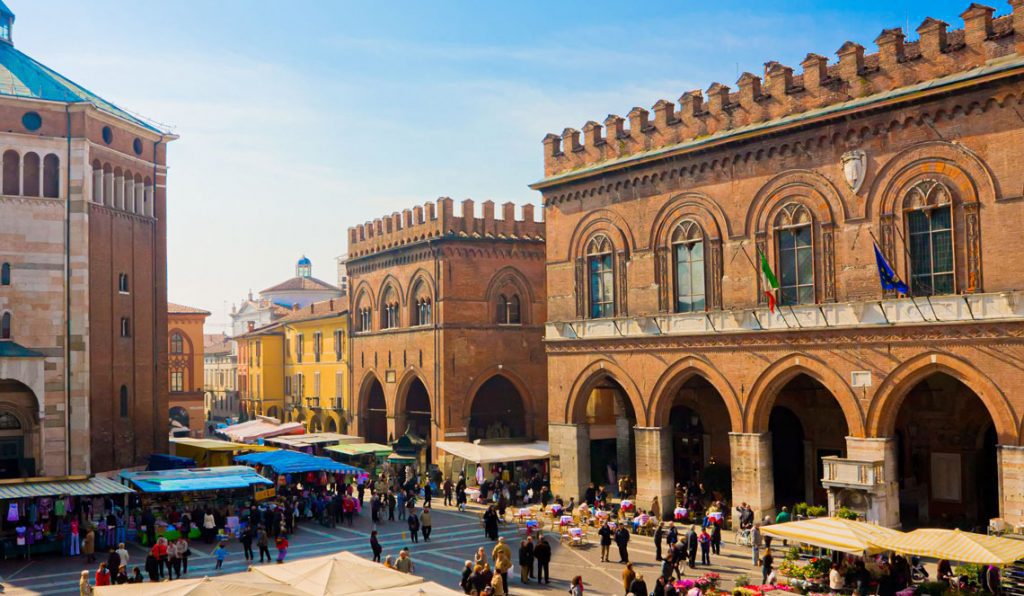
Finally, before going to lunch take a look at the Loggia dei Militi, the historic building on the left side of the Town Hall. It is one of the oldest buildings in the city, closely linked to the Società dei Militi, a society to which belonged the richest and most eminent inhabitants of the city. Under the portico you can see the emblem of Cremona, formed by a double simulacrum of Hercules (who according to legend was the founder of Cremona) holding the coat of arms of the city.
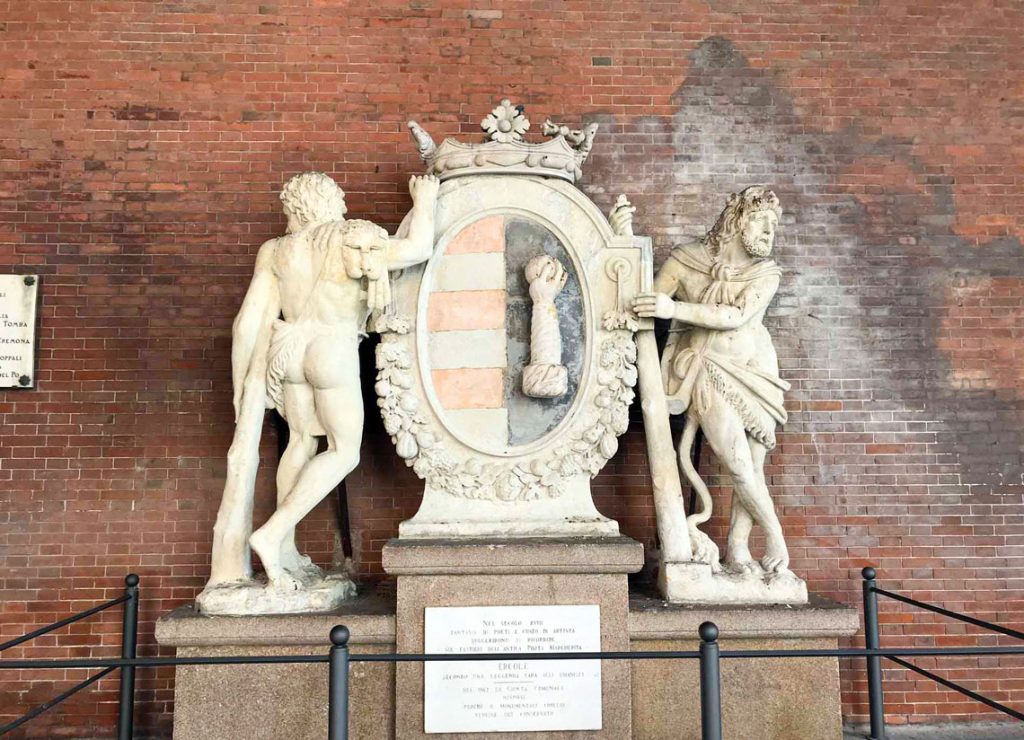
The Violin Museum
It was in Cremona that the violin reached its peak. In 1530, luthier Andrea Amati made violins that possessed a sound quality far superior to that of ordinary violins of the time. Soon his violins became popular in royal courts across Europe. It was then Antonio Stradivari – never heard of? – to bring violin construction to unmatched levels. Thanks to these exceptional violin makers, Cremona has become the world capital of violin making.
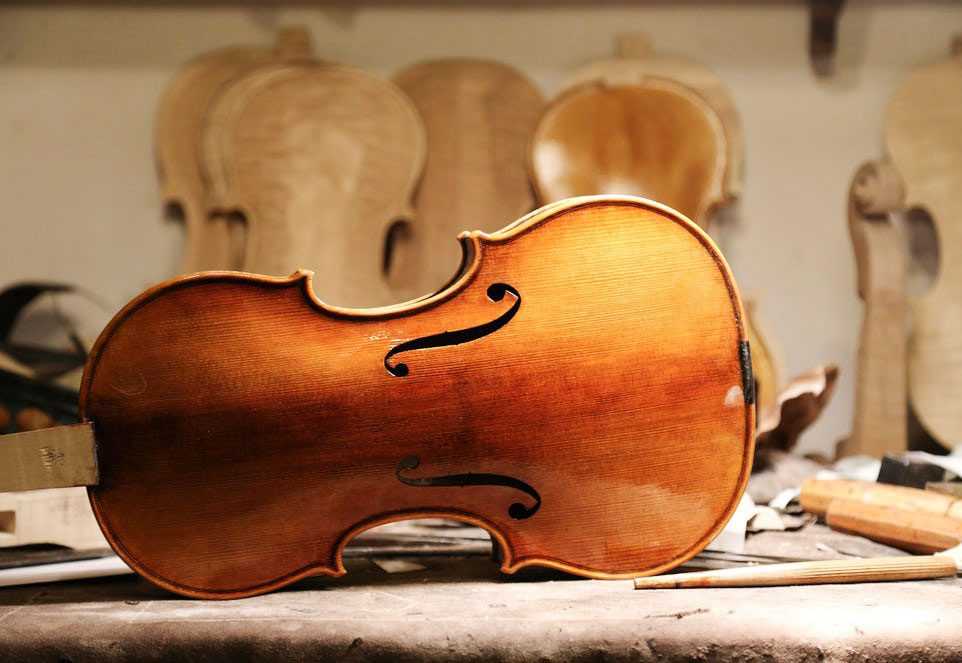
I therefore recommend a visit to the Violin Museum in Piazza Guglielmo Marconi. A fascinating and exciting journey to discover five centuries of violin making in Cremona.
Official website
Il Torrone di Cremona
You will notice that the center is full of shops selling sweets but the most historic workshop is Sperlari in via Solferino 25, the oldest shop in the city opened since 1836. Here you can taste one of the best varieties of torrone (nougat) in Cremona. The owner, a gregarious lady, assured me that nothing had changed since the first opening of its doors in 1836.
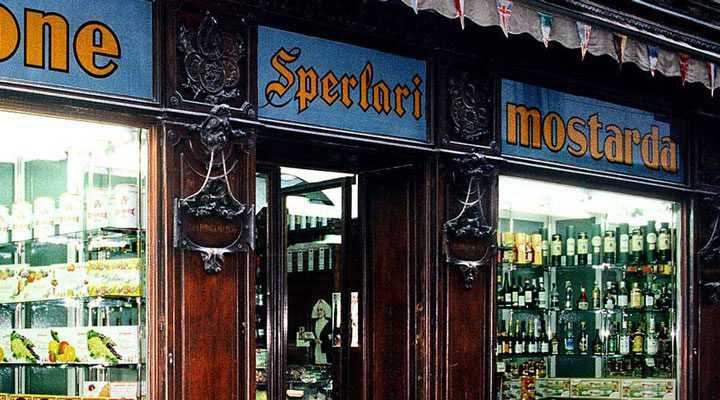 💡 Interesting to know:
💡 Interesting to know:
Legend says that torrone was prepared to celebrate the marriage of Bianca Maria Visconti to Francesco Sforza on the 25th October 1441. Made from almonds, honey, sugar and egg white, the nougat was supposedly shaped to resemble the Torrazzo, hence taking the name, torrone.
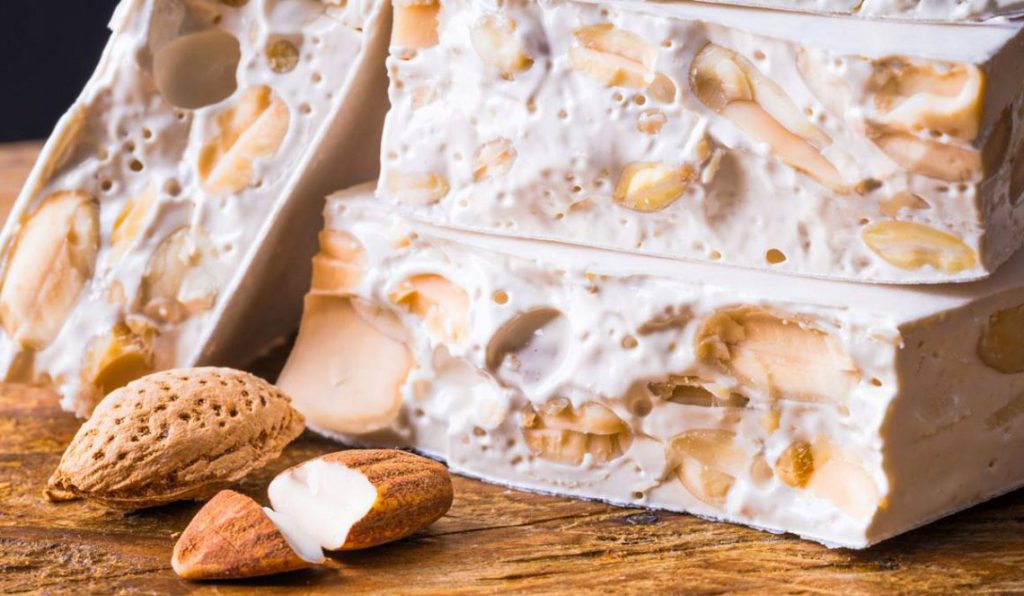
Right in front of Sperlari we find the Pasticceria Lanfranchi that has a lot of delicacies among the featured products. I tasted the Pan Cremona, the specialty of the house that is a cake with almonds covered with chocolate.
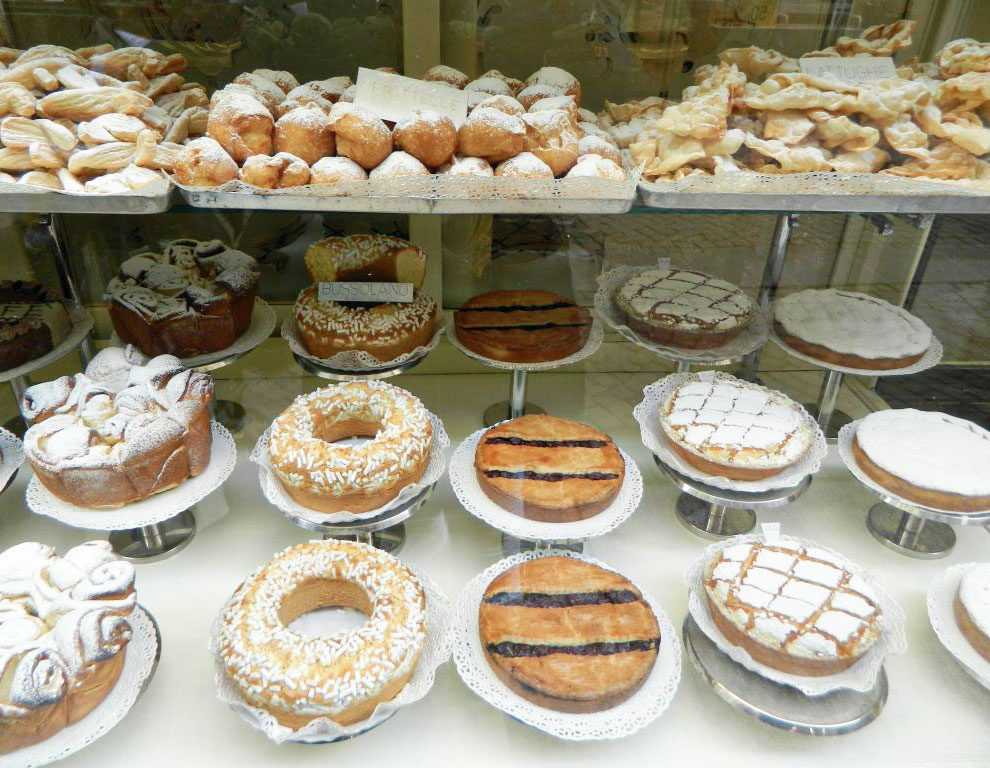
Lunch in Cremona
You will certainly be tempted to enter one of the many taverns with typical Cremonese dishes. Don’t miss the chance to taste the gran bollito (a dish with different types of boiled meats served with mustard), salame Cremona, cotechino and tasty cheeses as Provolona Valpadana and Salva Cremasco.
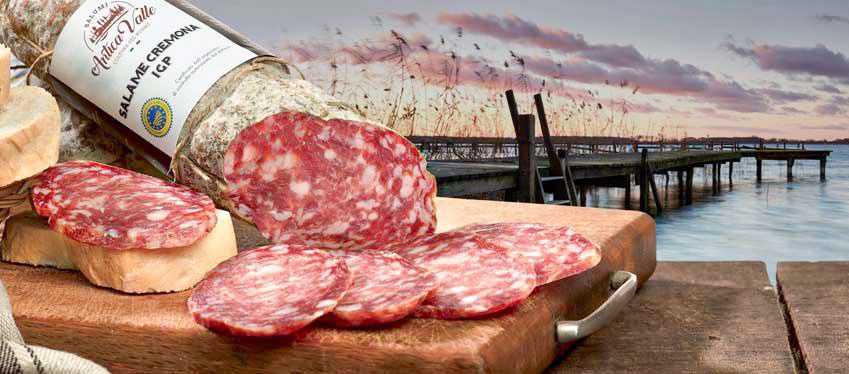
Just behind the Duomo there is a very interesting and authenitc trattoria where you can dive into the past and taste exquisite dishes prepared according antiques recipes. The Trattoria del tempo Perso with its vintage interior offers fresh home made pasta, risotto varieties, typical starters with cremonese mustard and delicious home made desserts.
I ordered super ravioli with pumking and salvia, cremonese cotechino, home made desserts and all was very good. Prices reasonable, cozy atmosphere and gentle staff.
Note: book absoutely the table in advance.
Address: Via Ceresole, 3, 26100 Cremona CR
Tripadvisor
Have a good tour and taste some torrone for me!😊






